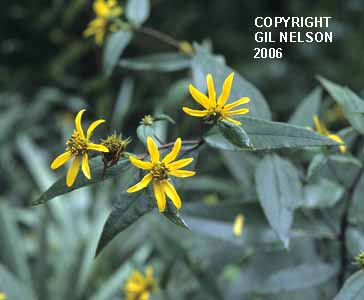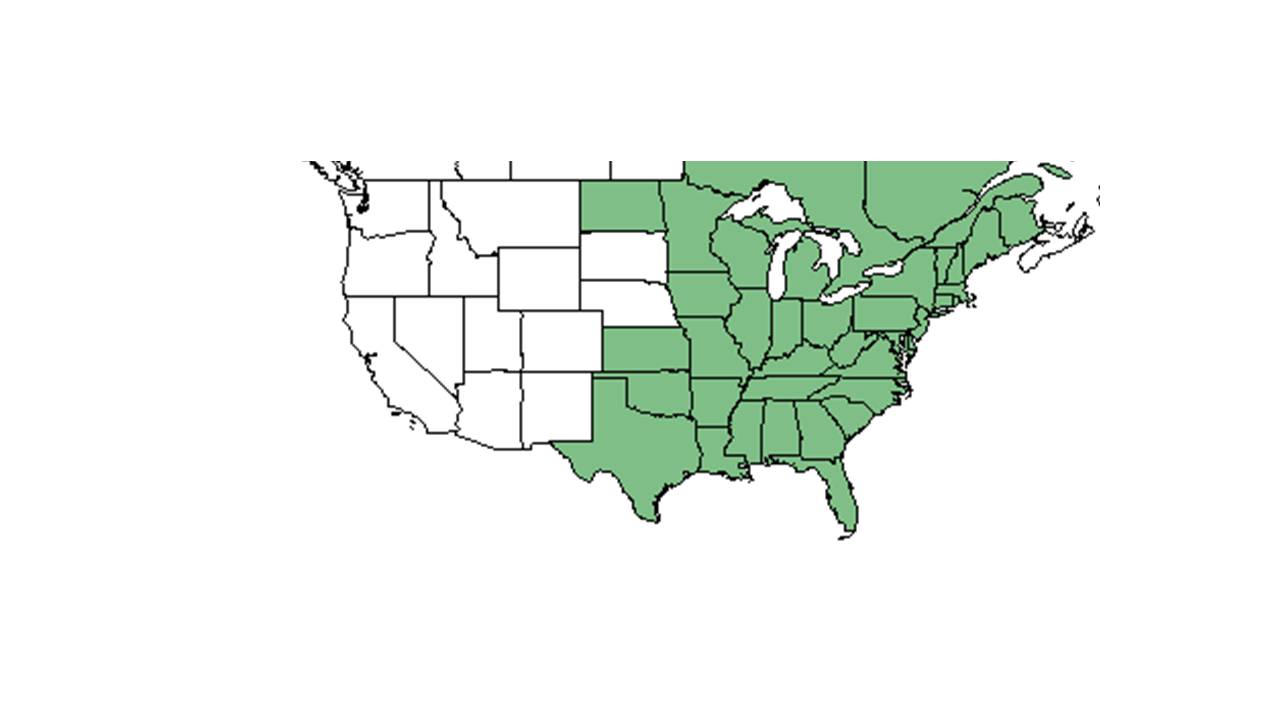Difference between revisions of "Helianthus strumosus"
| Line 48: | Line 48: | ||
<!--===Diseases and parasites===--> | <!--===Diseases and parasites===--> | ||
| − | ==Conservation and | + | ==Conservation, cultivation, and restoration== |
| − | == | + | ==Cultural use== |
==Photo Gallery== | ==Photo Gallery== | ||
<gallery widths=180px> | <gallery widths=180px> | ||
Revision as of 15:37, 8 June 2021
| Helianthus strumosus | |
|---|---|

| |
| Photo was taken by Gil Nelson | |
| Scientific classification | |
| Kingdom: | Plantae |
| Division: | Magnoliophyta - Flowering plants |
| Class: | Magnoliopsida – Dicotyledons |
| Order: | Asterales |
| Family: | Asteraceae ⁄ Compositae |
| Genus: | Helianthus |
| Species: | H. strumosus |
| Binomial name | |
| Helianthus strumosus L. | |

| |
| Natural range of Helianthus strumosus from USDA NRCS Plants Database. | |
Common names: Paleleaf woodland sunflower; Roughleaf sunflower
Contents
Taxonomic notes
Synonyms: Helianthus montanus E.E. Watson; H. saxicolus Small.[1]
Varieties: none.[1]
Description
A description of Helianthus strumosus is provided in The Flora of North America.
Helianthus strumosus is a perennial herbaceous species. It is colonial, with perennating rhizomes. This species also tends to be a taller species, with stems up to two meters long.[2]
Distribution
The distribution of this plant ranges from Maine, west to Minnesota and Kansas, and south to Panhandle Florida and Texas.[1]
Ecology
Habitat
H. strumosus occurs in drier, well-drained uplands, including sandy ridges, shaly slopes of oak-pine woods, crests of limestone bluffs, prairie over chalk, pine woodlands, and rocky embankments.[2] It also seems to prefer higher light conditions, occurring in clearings and edges of woodlands, and other open, sunny locations. In addition to more rocky soils, it can be found in sandy silt, sandy clay, or sandy loam. This species also occurs in disturbed habitat, including roadsides, power line corridors, and semi-cleared woodlands. Associated species include Longeleaf pine and Oak species.[2]
Phenology
Helianthus strumosus has been observed flowering in August[3]. Fruiting has been observed in July and August.[2]
Fire ecology
This species has been found in annually burned pine woodlands.[2]
Conservation, cultivation, and restoration
Cultural use
Photo Gallery
References and notes
- ↑ 1.0 1.1 1.2 Weakley, A.S. 2015. Flora of the southern and mid-atlantic states. Working Draft of 21 May 2015. University of North Carolina at Chapel Hill, Chapel Hill, North Carolina.
- ↑ 2.0 2.1 2.2 2.3 2.4 Florida State University Robert K. Godfrey Herbarium database. URL: http://herbarium.bio.fsu.edu. Last accessed: June 2014. Collectors: John B. Nelson, S. Bennett, John W. Thieret, H. R. Bennett, Robert Kral, Mabel Kral, D. S. Correll, H. E. Ahles, J. A. Duke, G. W. Parmelee, Mary E. Wharton, Robert F. Thorne, Scott McCoy, R. Kral, Delzie Demaree, Martha Lee, Dan Pittillo, _ Anderson, Tom S. Cooperrider, Norlan C. Henderson, Sidney McDaniel, Michael B. Brooks, Valerie Lumpkin, Kent D. Perkins, Fred Neal, R.K. Godfrey, Douglas Gage, D. S. Correll, R. A. Norris, Angela M. Reid, K. M. Robertson, and Loran C. Anderson. States and Counties: Arkansas: Phillips. Florida: Alachua, Leon, Liberty, and Madison. Georgia: Clarke. Illinois: Cook. Indiana: Newton. Iowa: Dickinson and Jones. Kentucky: Rockcastle. Louisiana: Bienville, Jackson, Natchitoches, Sabine, and Washington. Maryland: Baltimore. Michigan: Oakland. Mississippi: Chickasaw, Forrest, and Oktibbeha. Missouri: Jackson. North Carolina: Iredell and Macon. South Carolina: Sumter and Union. Tennessee: Wayne. Texas: Upshur. Virginia: Alleghany and Giles.
- ↑ Nelson, G. PanFlora: Plant data for the eastern United States with emphasis on the Southeastern Coastal Plains, Florida, and the Florida Panhandle. www.gilnelson.com/PanFlora/ Accessed: 19 MAY 2021